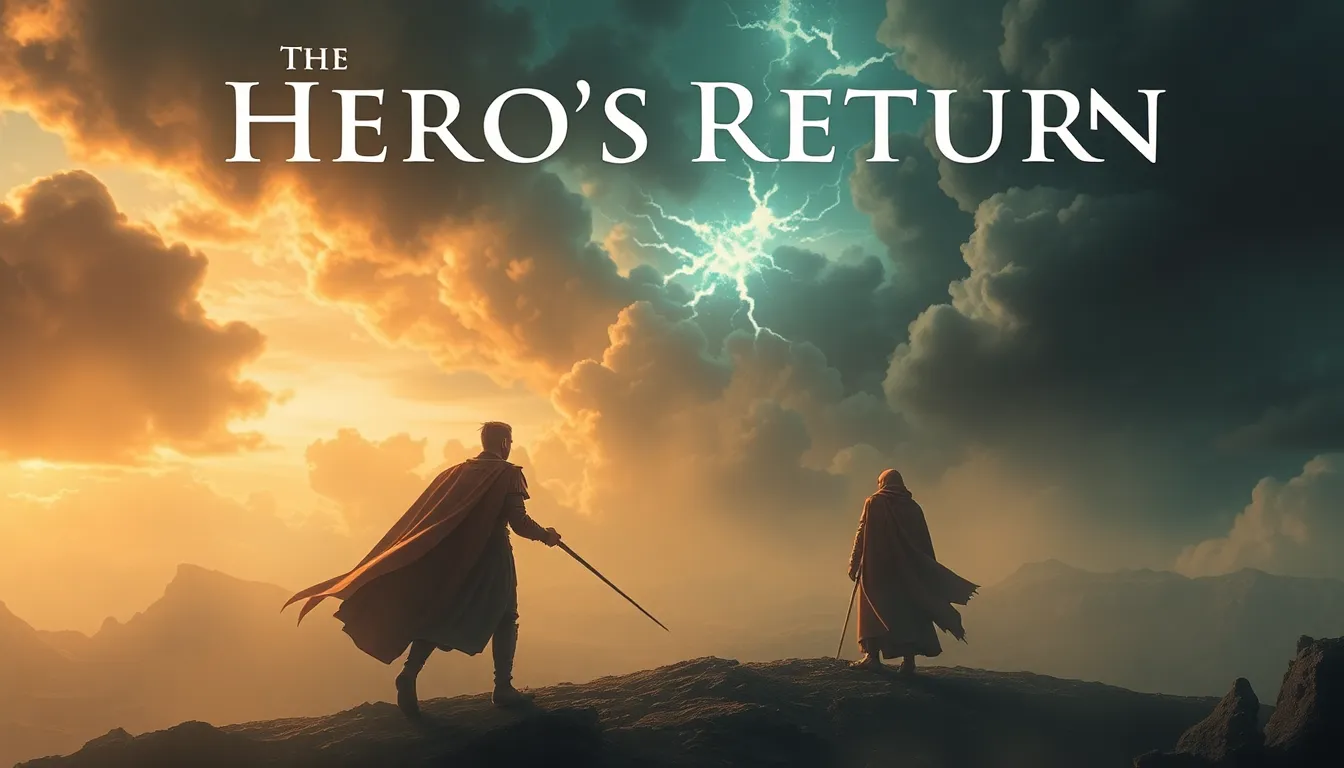From Noah to Nuh: Exploring Global Flood Legends You Never Knew Existed
I. Introduction
Flood myths are a fascinating aspect of cultural storytelling that can be found in nearly every civilization around the globe. These narratives, often involving a great deluge that wipes out humanity or a significant portion of it, serve as a testament to the shared experiences and fears of societies throughout history. The significance of these legends goes beyond mere storytelling; they provide insights into human resilience, moral values, and the relationship between humanity and nature.
This article aims to explore lesser-known flood stories from various cultures, highlighting the similarities and differences that exist among them. By examining these narratives, we can better understand the human experience and the lessons that have been passed down through generations.
II. The Biblical Account: Noah’s Ark
The story of Noah’s Ark, found in the Book of Genesis, is perhaps the most well-known flood narrative in Western culture. According to the Bible, God decided to cleanse the earth of its wickedness by sending a great flood, sparing only Noah, his family, and a pair of every animal species. Noah was instructed to build an ark to survive the impending deluge.
The theological implications of this story are profound, as it raises questions about divine judgment, mercy, and the covenant between God and humanity. Many interpretations have emerged over the years, with some viewing it as a literal historical event, while others see it as an allegory for rebirth and renewal.
The influence of Noah’s story extends far beyond religious texts; it has permeated art, literature, and popular culture, becoming a symbol of hope and salvation amidst chaos.
III. Nuh in Islamic Tradition
In Islamic tradition, the story of Nuh (Noah) is recounted in the Quran, where he is portrayed as a prophet sent by God to warn his people of impending punishment due to their idolatry and sinfulness. The Quranic account shares several similarities with the Biblical narrative, including the construction of an ark and the sparing of a believer’s family and pairs of animals.
However, there are notable differences, such as the nature of Nuh’s interactions with his people and the emphasis on his role as a messenger of God. In Islamic culture, Nuh’s story serves as a powerful reminder of faith, perseverance, and the consequences of turning away from divine guidance.
IV. Ancient Mesopotamian Flood Myths
The Epic of Gilgamesh, one of the oldest known literary works, features a flood narrative centered around Utnapishtim, a character who is warned by the god Ea about an impending flood meant to destroy humanity. Utnapishtim builds a massive boat to save himself, his family, and various animals, paralleling the Noah story in many aspects.
- Comparison with Noah’s Ark: Both narratives involve a divine warning, a chosen individual, and the preservation of life through a boat.
- Influence on later flood narratives: The similarities between these myths suggest a shared cultural memory of catastrophic flooding, influencing subsequent stories across different civilizations.
V. Flood Legends in Indigenous Cultures
Indigenous cultures also possess unique flood legends that reflect their values and experiences. For example, the Ojibwe people of North America tell a story of a great flood that occurred when the earth was covered in water, and only a few were saved through the guidance of a great spirit.
Similarly, the Zuni people of the American Southwest recount a flood myth that emphasizes the importance of harmony with nature. In these stories, the flood serves as a cleansing force, washing away corruption and allowing for renewal.
- Lessons and morals: Both the Ojibwe and Zuni legends highlight themes of respect for nature, community, and the consequences of human actions.
VI. Flood Myths in Asian Cultures
Asian cultures also have rich flood narratives. In Chinese mythology, the legend of Gun-Yu tells of a great flood that was eventually controlled by the hero Yu, who worked tirelessly to manage the waters and restore order to the land.
In Hindu tradition, the account of Manu describes how he was warned of a great flood by a fish (an incarnation of the god Vishnu) and built a boat to save himself and the seeds of all living things.
- Common themes: Across these narratives, themes of divine intervention, human effort, and the cyclical nature of life and death are prevalent.
VII. African Flood Narratives
African mythology also features compelling flood stories. The Dogon people, for instance, tell of a great flood that brought destruction but also regeneration, symbolizing the cyclical nature of life and the importance of water as a source of sustenance.
Water in African mythology often represents rebirth, with floods seen as both destructive and necessary for the renewal of the earth.
- Comparison with other global flood legends: African flood narratives share themes of destruction and renewal found in other cultures, emphasizing the universal significance of water in human life.
VIII. European Flood Myths Beyond the Bible
In addition to the Biblical account, European cultures have their own flood myths. The Finnish creation myth includes a flood aspect where the world is cleansed before the creation of humans. Similarly, Greek mythology features the story of Deucalion, who, much like Noah, survives a great flood sent by Zeus and repopulates the earth.
- Cultural insights: These myths reflect the ancient Greeks’ understanding of divine retribution and the importance of piety and morality in human affairs.
IX. The Psychological and Sociological Perspectives
The prevalence of flood myths across different cultures raises intriguing questions about their origins. These stories may stem from collective memories of natural disasters, serving as cautionary tales about human hubris and the forces of nature.
Natural disasters often shape collective memories, creating narratives that reinforce cultural beliefs and values. Flood myths also offer psychological solace, providing frameworks for understanding suffering and loss.
X. Conclusion
In summary, the exploration of flood legends from various cultures reveals profound insights into the human experience. From the Biblical Noah to the diverse narratives found in indigenous, Asian, African, and European cultures, these stories share universal themes of survival, rebirth, and the relationship between humanity and nature.
As we reflect on these tales, it becomes clear that they are not merely stories of destruction but also powerful narratives of hope and resilience. By appreciating the diversity of these cultural narratives, we gain a deeper understanding of our shared humanity and the lessons that can be drawn from our collective past.


